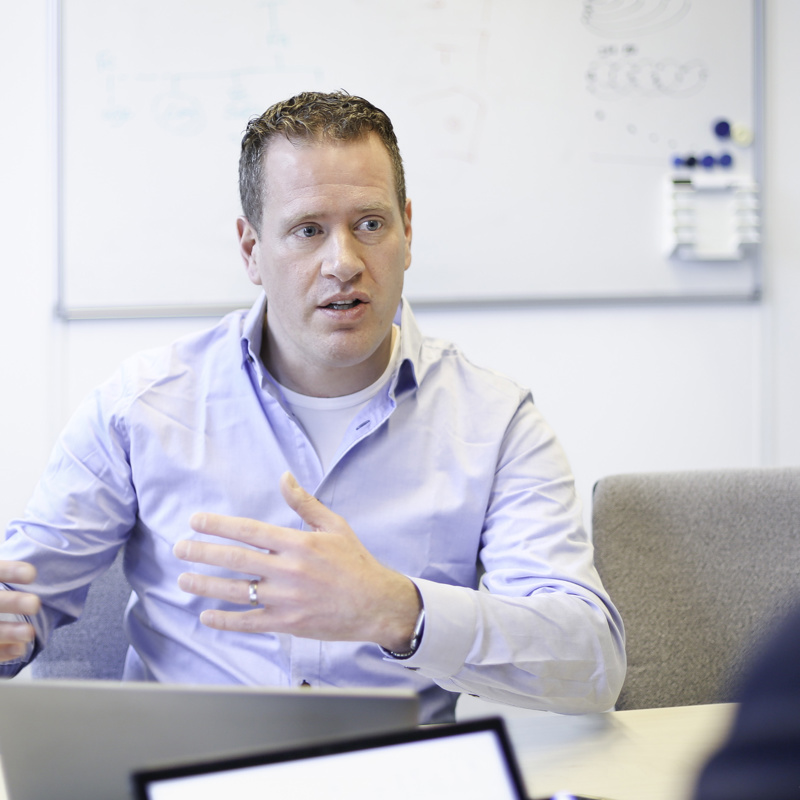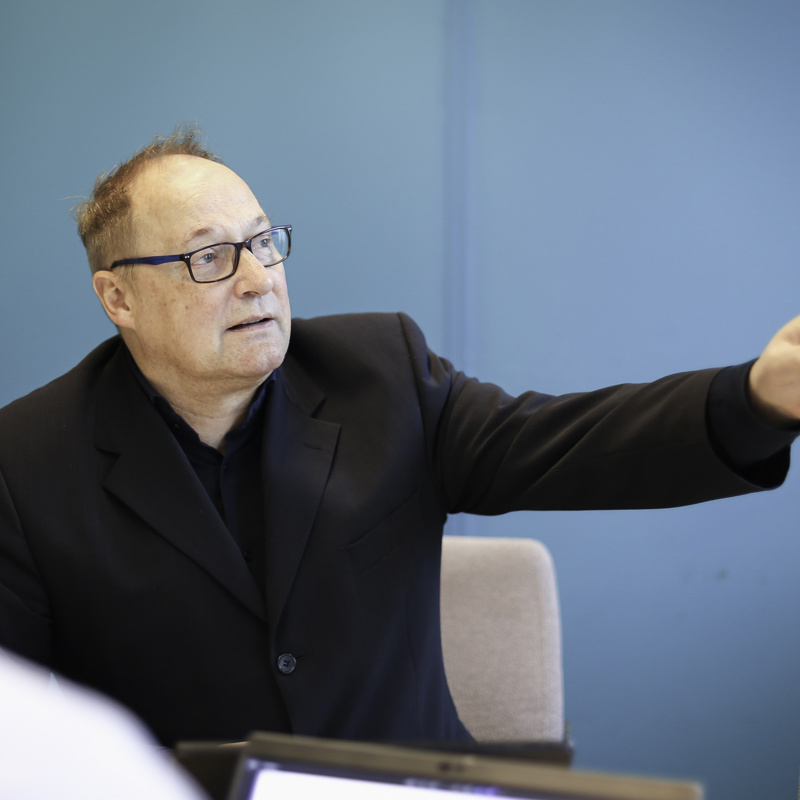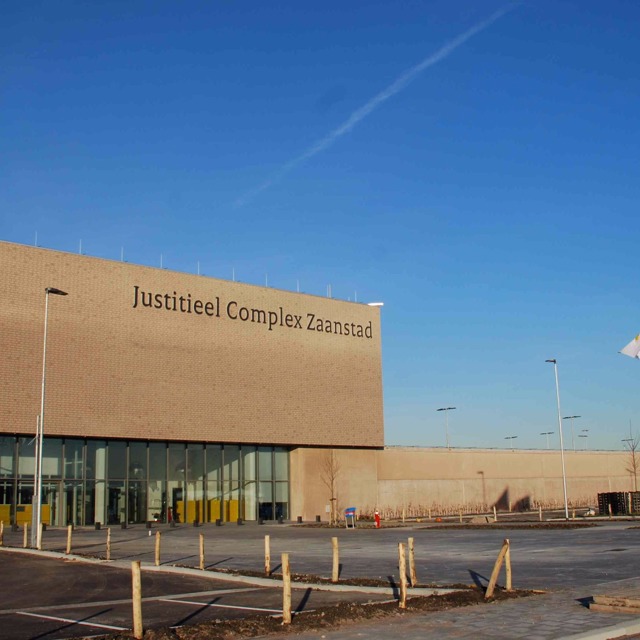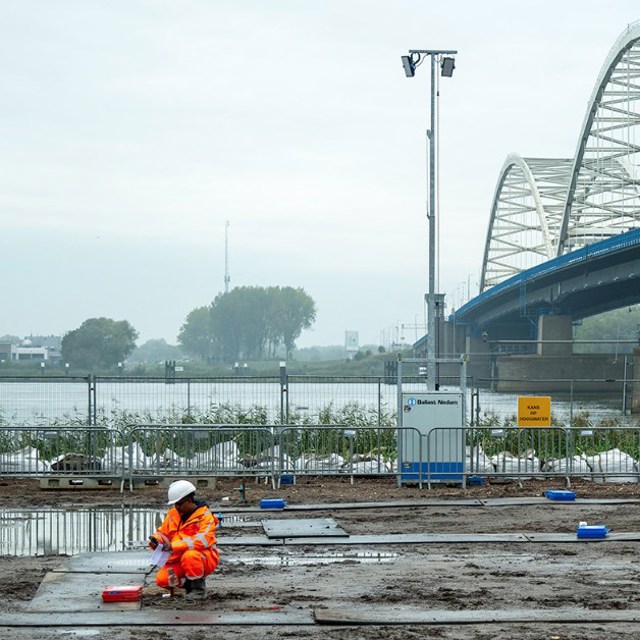Asset Management builds its own power network
Generating our own, sustainable energy is high on Ballast Nedam's agenda. Our goal is to be CO2 neutral by 2030 and energy neutral by 2040. Energy-neutral means that we generate as much energy as we need ourselves. In 2023, we ended up with 11.8% renewable energy from our own generation and for 2024 this will possibly be 25%. Energy manager Mark van der Zijde and director Walter van Gurp of Ballast Nedam Asset Management explain how we intend to achieve this.
"It is a duty for us as a construction company to actively contribute to the sustainability drive in the construction world and to do business in a socially responsible way. We also want to take a leading role in this," Mark and Walter explain.
Virtual Power Plant
Ballast Nedam Asset Management is working on how to achieve the sustainability goals for 2030 and 2040. Besides an advisory role, this department is also decisive in choices for office and project locations.
One of the innovations planned is a Virtual Power Plant. With this, the aim is to link assets that consume energy with assets that produce energy. "We will do this through a mix of solar and wind energy. By scaling up the production capacity from this, we are trying to become increasingly independent of the electricity grid. In bringing consumption and generation together, the challenge is to make this take place as locally and simultaneously as possible and thus be able to reduce the additional purchase of power from the grid. After all, how green is that power from the grid at that moment really?", add Mark (left) and Walter (right).


Smart use of power
"Our ultimate aim is to realise a Virtual Power Plant by not only applying demand response (demand control) of, for example, charging facilities of our electric vehicles or heat generation in production processes, but also applying curtailment of renewable generation capacity in case of a surplus. Curtailment means that we temporarily reduce generation from solar roofs and wind turbines to even 0% in case of negative prices. This keeps the relationship between energy supply and demand in balance."
At the Zaanstad Judicial Complex, its own energy is already being generated. Here, a wind turbine is linked to the electricity supply. "This location is a great example of locally linking a mix of solar and wind energy to a consumer. In addition to a solar roof of over 1 MW peak, a 2 MW wind turbine nearby directly powers the Judicial Complex. Any electricity that is not purchased immediately is fed back into the grid. We have made investment proposals to make the premises more sustainable by reducing gas consumption by electrifying it. This would also allow us to increase the simultaneity of consumption from renewable generation."
Turning the switch
Besides generating our own energy, it is important to save energy. From Ballast Nedam Asset Management, the switch has therefore been turned in several ways. "Being energy-conscious already saves a lot. Turning down the heating one degree in winter and turning up the cooling one degree in summer has led directly to reduced consumption. In addition, many properties still depend on their gas connection for heating. In the coming years, we will try to tackle this directly in renovation projects by opting for a heat pump. This transition also brings new challenges, as we are increasingly facing grid congestion."
Grid congestion literally means congestion on the electricity grid. This happens when the demand for transporting electricity exceeds the grid's transmission capacity. "Combined with the further electrification of our vehicle fleet, this requires good insight and management in deploying the regional grid operators' allocated transmission capacity."
Green Energy Day
Despite the fact that we are making strides in producing renewable energy in the Netherlands, this is still not nearly enough to make it through the year. In 2024, it was Green Energy Day on 8 March: the day when all renewable energy in the Netherlands 'runs out'. The good news is that this day moves up a bit each year. The goal from the Climate Agreement is to reach 20 per cent renewable energy by 2024. And that seems to be on track.
But that doesn't mean we can sit back, as Mark and Walter also know: "As a builder, we need to invest in flexibility to be and become less dependent on external parties and developments beyond our control. By combining available grid capacity in construction processes with smart systems, we can better balance electricity supply and demand. In doing so, we anticipate a rapidly changing electricity grid in which the use of a large-scale connection for large projects, for instance, is no longer taken for granted. It creates challenges but also opportunities to become more self-sufficient and thus make a positive contribution to the energy transition."





